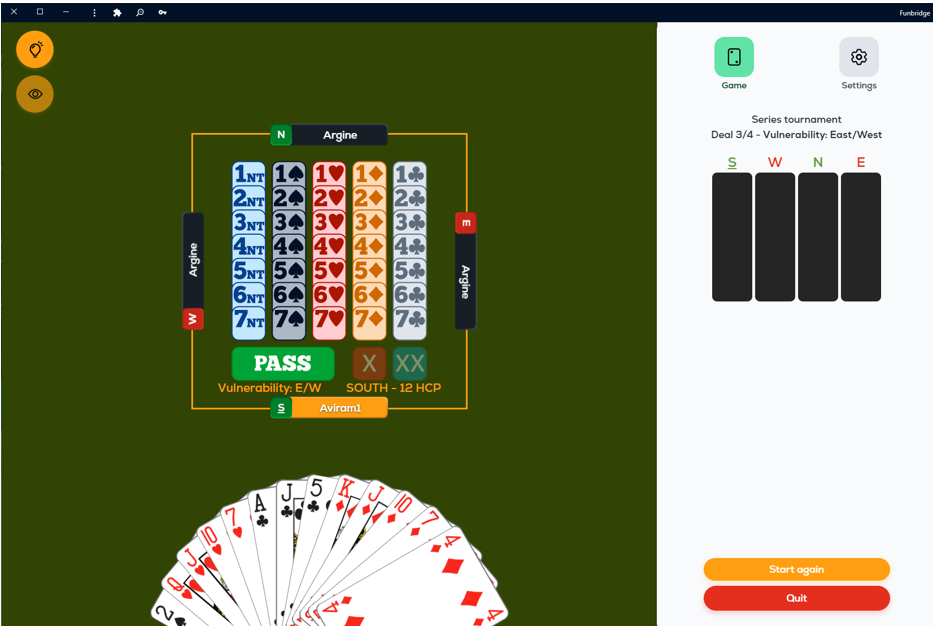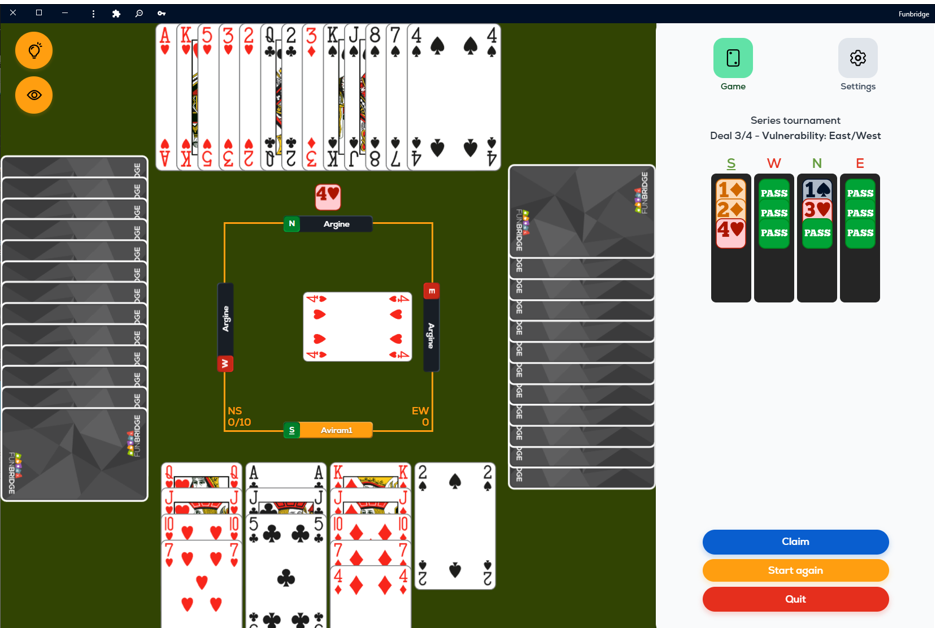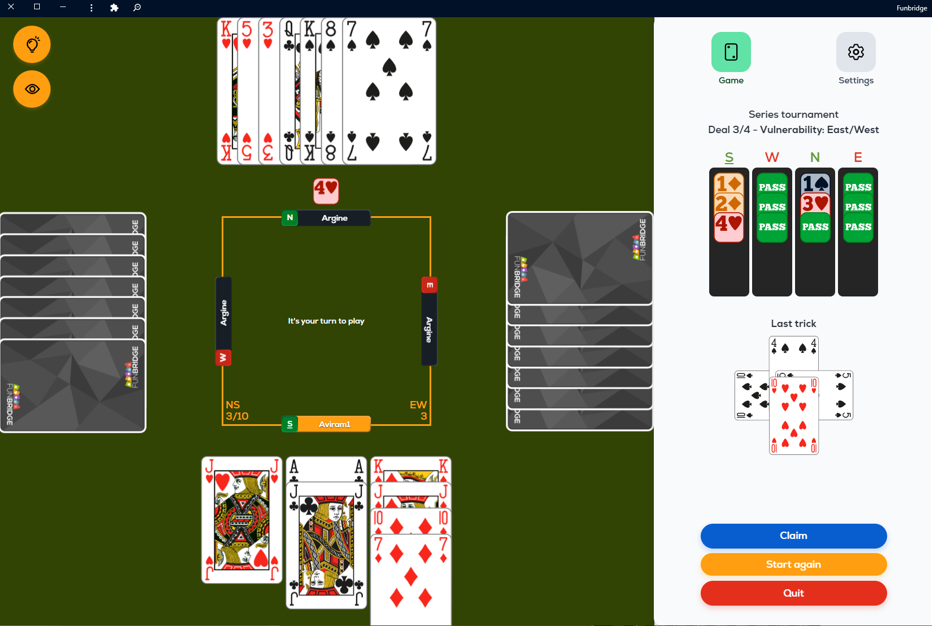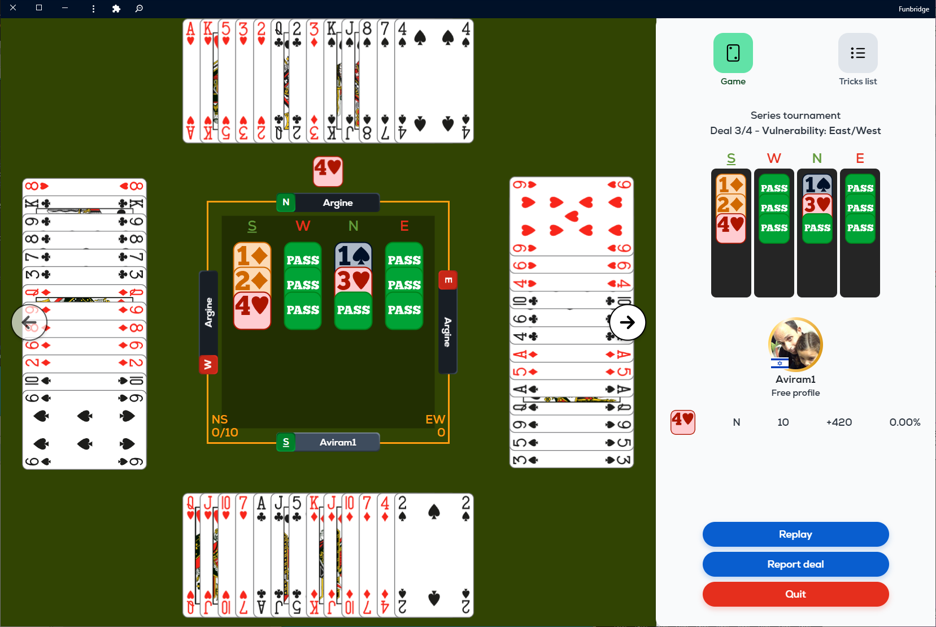
A Test for Opponents

Who said that only great champions can write bridge articles? Funbridge launched a brand-new format of article a few months ago. You, talented players, will be our bridge authors and give your expert opinion about deals of particular interest to you. We are delighted to share a very interesting article written by a member of our community just below.
Focus on the author

Yoram Aviram is an experienced bridge player and a former member of the Israeli Junior and Open teams with several achievements on the national and international scenes.
Yoram left the game many years ago to focus on family and work (in the field of computerised trading of financial instruments) and switching hobbies from the mind sport of bridge to the physical sport of competitive road cycling.
He is now returning to his old passion and has adopted Funbridge as the platform on which to refresh his old skills.
He is happy to share deals of particular interest with the Funbridge community on the blog.
A Test for Opponents
A main feature of Funbridge is the “series tournaments”. They serve as a constant league, assigning a rank to each player and grouping players by their rolling performance. There are 12 levels, the top one being the “Elite” series. The Elite group consists of around 400 players, that is just 0.4% of all players. Having entered the Elite series, securing your place is a biweekly challenge. The competition is tough and it is quite hard to reach the required 55% threshold.
Playing in a series tournament, I hold the following hand:

As dealer, with opponents silent, the bidding goes: 1♦ by me, 1♠ by partner, 2♦ by me, 3♥ by partner (5♠+5♥ forcing), 4♥ by me. East leads a trump and my hand becomes dummy:

It seems that East found the defence’s best lead. With just 6 top tricks, the hand seems to require some work. The diamond and spade suits offer some potential. Cross-ruffing also seems possible. There is also the club finesse… I can’t come up with a definite plan yet. The play will have to be developed “on the go”.
Meanwhile, it seems natural to win the lead in dummy and put West to an immediate test by playing a spade. In trump contracts, playing a singleton from dummy early often puts pressure on the opponent who is next to play when holding the Ace. Should he immediately take his Ace? If he does, that might help declarer develop the suit or solve him a guess (if, for example, he has a suit headed by KJ). If he doesn’t, he might not get the trick later. An equivalent is playing from declarer’s hand towards dummy’s (Ace-less) strong suit. Whenever declarer is possibly short in the suit, the defender is in the same dilemma.
In live (human) bridge, those plays also have a psychological advantage. The tempo of opponents’ play might be a clue – pausing suggests holding the Ace. As pausing at the critical time is a tell, the defender’s way to cope with that is to prepare early and play smoothly when he should. However, experienced declarers may draw conclusions even from early thinking pauses. For example, a defender’s thinking pause implies that he has something to think about, possibly whether to play an Ace or not at a later stage. That is one reason why you should always think and plan the defence before playing to the first trick. (Needless to say, that is not to legitimise deceitful thinking.) Of course, the psychological element is not relevant when playing against AI…
Interestingly, that hand features both positions, so both opponents are going to be tested. West follows to the trump and plays low to the spade from dummy. He might have played the Ace if he had it, so I try the Jack. East wins the Queen and plays the ♥6. Time to put East to the test. I win the heart in hand with the Ace (West discarding a club) and play a diamond. East helpfully jumps with the Ace and plays a club. I could prevent a club loser by immediately winning the Ace and discarding my other club on the King of Diamonds. However, that will also deny me of a second club trick and leave me way short of the needed 10 tricks. So, I play small and West takes the King, the defence’s third trick. West plays the ♠10. He wouldn’t underplay the Ace, so I play low and ruff in dummy, East following low. That is the position:

So far, I have taken 3 tricks. I can count 2 more in Clubs, 1 more in Diamonds and 3 more trumps. That makes 9. Can I ruff a spade in dummy for the tenth trick? Say I cash the Ace and Jack of Clubs, the King of Diamonds (discarding 2 spades from North), ruff a diamond in North and a spade in dummy. I will now have to play another diamond and ruff in North, but East has a trump left and may overruff. That might work if East’s exact distribution is 3-3-4-3. A better plan might be a ruffing finesse of the diamond Queen. If West has it, there is a 50% chance that it will be my tenth trick. Anything better? I believe so. I can try to develop a long diamond trick. Say I play the King of Diamonds, ruff a diamond in North, enter dummy with a trump and ruff the fourth diamond in North. If Diamonds are 4-3 either way, there is a 62% chance that dummy will be high and accessible with a club. That is a reasonable chance but I see further improvement. I can combine the ruffing finesse and long diamond plays. Say I cash the diamond King, then ruff a small diamond (with the King). If East shows out, the ruffing finesse is on. I can enter dummy in trumps (drawing East’s last trump) and play the diamond Jack for a finesse. Dummy still has a club entry and I have my 10 tricks. If, however, both opponents follow to the third diamond, then they are breaking 4-3 and after the trump to dummy and the fourth diamond ruffed, the long diamond will be my tenth trick.
That is the best I see, so I proceed: ♦K, both opponents follow. ♦7 ruffing with the King, East discards a spade. The finesse is on! A trump to dummy and ♦J. West covers, I ruff and dummy is high.
That was the full hand:

Everybody played in Hearts. Around half made 10 tricks. Did I mention that the competition is tough? Since some tried for slam and reached the 5-level, bidding and making 4♥ was worth 87%, quite a feat at the Elite level.
What is the concept behind community articles?
“Would you like to write an article too?
We at Funbridge like giving our players a voice. Here is a format of articles written by the players themselves.
If you see a deal of particular interest and you want to share it with the Funbridge community, tell us in the Comments section below! We will get back to you soon.”

Content Manager
What did you think of this article?
Share your opinion in the Comments section below!



